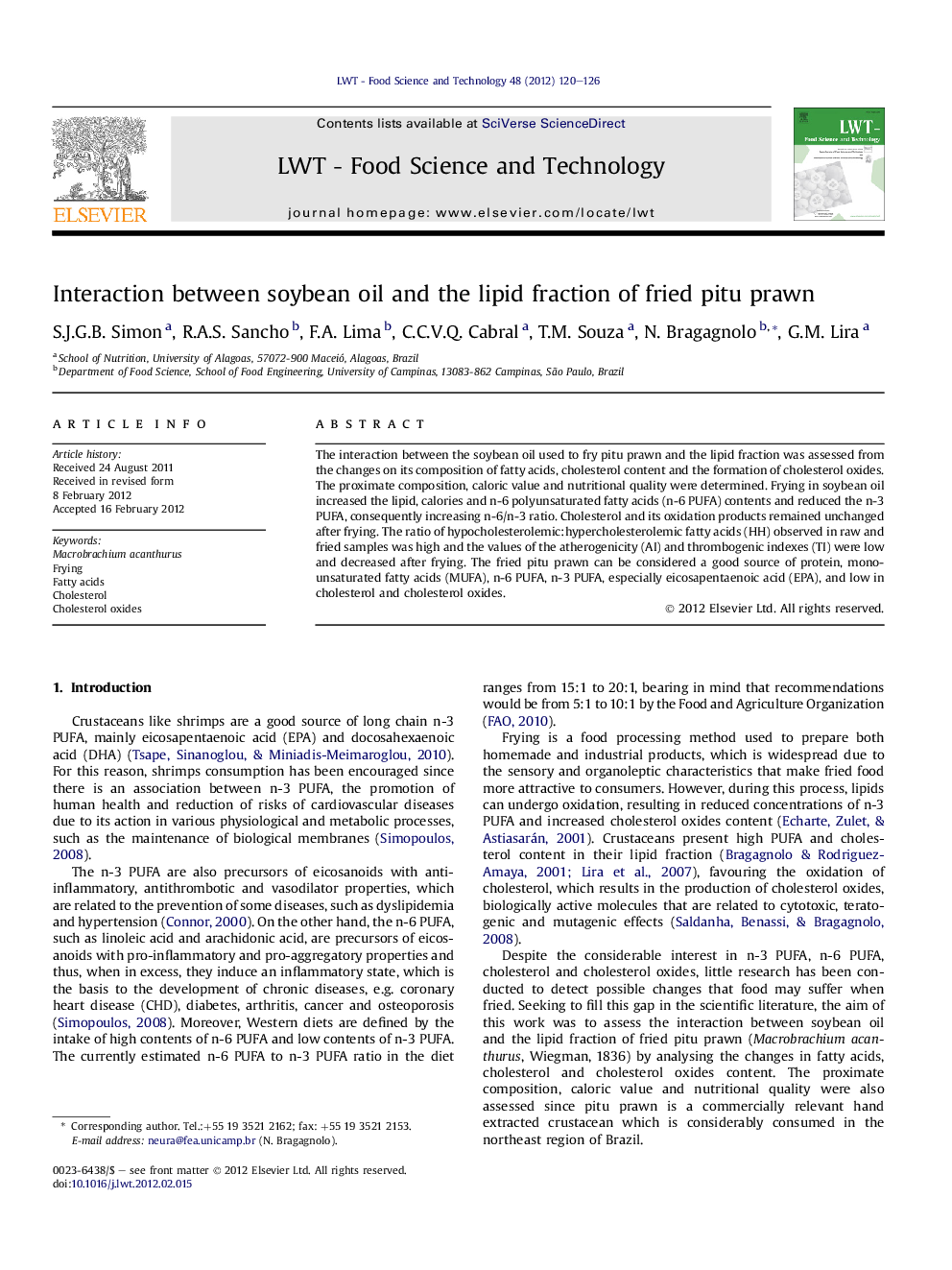| Article ID | Journal | Published Year | Pages | File Type |
|---|---|---|---|---|
| 6405184 | LWT - Food Science and Technology | 2012 | 7 Pages |
The interaction between the soybean oil used to fry pitu prawn and the lipid fraction was assessed from the changes on its composition of fatty acids, cholesterol content and the formation of cholesterol oxides. The proximate composition, caloric value and nutritional quality were determined. Frying in soybean oil increased the lipid, calories and n-6 polyunsaturated fatty acids (n-6 PUFA) contents and reduced the n-3 PUFA, consequently increasing n-6/n-3 ratio. Cholesterol and its oxidation products remained unchanged after frying. The ratio of hypocholesterolemic:hypercholesterolemic fatty acids (HH) observed in raw and fried samples was high and the values of the atherogenicity (AI) and thrombogenic indexes (TI) were low and decreased after frying. The fried pitu prawn can be considered a good source of protein, monounsaturated fatty acids (MUFA), n-6 PUFA, n-3 PUFA, especially eicosapentaenoic acid (EPA), and low in cholesterol and cholesterol oxides.
⺠Pitu prawn is a commercially relevant crustacean, but its composition is unknown. ⺠Frying pitu prawn in soybean oil increased the lipid, n-6 PUFA and n-6/n-3 ratio. ⺠The fried pitu prawn is a good source of protein, MUFA, n-6 PUFA and n-3 PUFA. ⺠The fried pitu prawn is low in cholesterol and cholesterol oxides. ⺠The indexes of nutritional quality for lipids were positive to raw and fried prawn.
